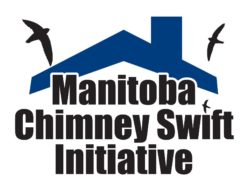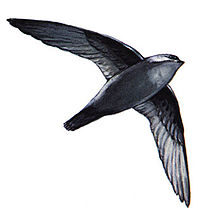
Here it is – the monster wrap-up monitoring blog for 2016. August sped by in a dizzying fashion, starting with the early dispersal of swifts from roosts. Yet the month stretched out as we tracked fledging, late nesting breeders, and migrating swifts. Without further ado, here is what you all reported…
In mid-July, Ken reported activity in the chimney of the Visitor Centre at Riding Mountain National Park. A mid-day entry and exit on July 14, and evening entry/exit cycles on July 15, indicated a nest site was active. A cleanout trap is accessible on this chimney so breeding success can be verified.
In late July, the St James monitors shifted to morning observations at three of their sites. Adolf and David noted activity at: the Carillon – 2 exits; the new 1780 Portage site – 2 exits and an entry; and Assiniboine School – an exit indicated that the nesting activities at this combined roost/nest site continued.
Similarly, John was as busy as his nesting swifts in late July. He monitored on July 30 and 31, then started in again on August 1. “I have been to Princess and McDermot the last three days and saw entry and exits every 12 to 20 minutes with about 30 seconds in the chimney. Yesterday morning I had 5 swifts flying over the nest at McDermot for about 10 minutes as well as one entry/exit in 40 minutes. I’m hoping that was flying lessons I witnessed with at least one more chick still being feed on the nest.” The timing was right for fledging and we hope that was the case.
An unexpected event unfolded in St James on the evening of August 2. Adolf was hosting a group from Bethel Place, assembling to “observe the phenomenon of Chimney Swifts entering the Assiniboine roosting chimney”. The phenomenon fizzled. No more than 2 swifts were seen at once and the total for the night was only 8! A week earlier, on July 25, 61-63 swifts had come in for the roost. The swifts were on the move.
Following on the theme of unexpected events, Gord and Janice checked their Portage sites in early August. The swifts were late-arriving in town this spring and showed no signs of nest building along the way. However, on August 1 (roost) and August 2 (daytime) feeding activity was noted at Victoria School. Janice saw 3 consecutive exits, 2 consecutive entries and 2 consecutive exits in 30 minutes of viewing over the noon hour on August 2. Returning August 5, Janice noted 4 feeding cycles in an hour of dinnertime monitoring on August 5. This is the FIRST nesting attempt recorded for this site.
Frank and Jacquie hit the road again on August 3, passing through Aubigny. There was a brick chimney of interest on the rear of the church. Heading back on August 5, 0 swifts were seen in the airspace. Given the early departures witnessed in Winnipeg, another look-see next year is warranted.
John continued his “new site magnet” ways on August 3. “On my way back from the north end today I stopped at two chimneys for a 5 minute peak. No luck with the first, which was more of a smoke stack than a chimney. At the second I had an entry and exit, then 20 minutes later had 2 swifts entry and exit less than a minute later. Looks like another nest!” Site 2016-20 is located at 70 Higgins. This new site is John’s fourth discovery for 2016 and the last addition to the critical habitat registry list for 2016. Great work John.
To keep John’s accomplishments together, here is a summary of his sites:
- Site 2016-4, William Ave; maximum count = 4, June 2 (NRMP-3);
- Site 2016-6, 579 McDermot, nest site; likely successful; fledging ~ August 1;
- Site 2016-14, 41 Princess; nest site; likely successful; 3 roosting August 16;
- Site 2016-20, 70 Higgins; nest site; successful; 5 roosting August 15.
Moving on to Selkirk on August 3, Winona was at her Merchant Hotel site and watched 8 swifts flying about – they all roosted! The breeding attempt appears to have been successful. On July 27 and 28, increasing entry/exit activity was noted before the increase of roosting swifts was seen on August 3.
More good Selkirk news came from Robert on August 3. He saw 4 swifts enter the Infirmary chimney – 2 of them were juveniles! The benefit of making frequent, concurrent observations at nearby sites is that the synchrony of breeding events can be compared. Both the Merchant and Infirmary sites had a breeding pair on site in May during the NRMP.
At another Selkirk site, Gerald saw no activity at his Manitoba Ave site on August 2. No flying swifts were seen either.
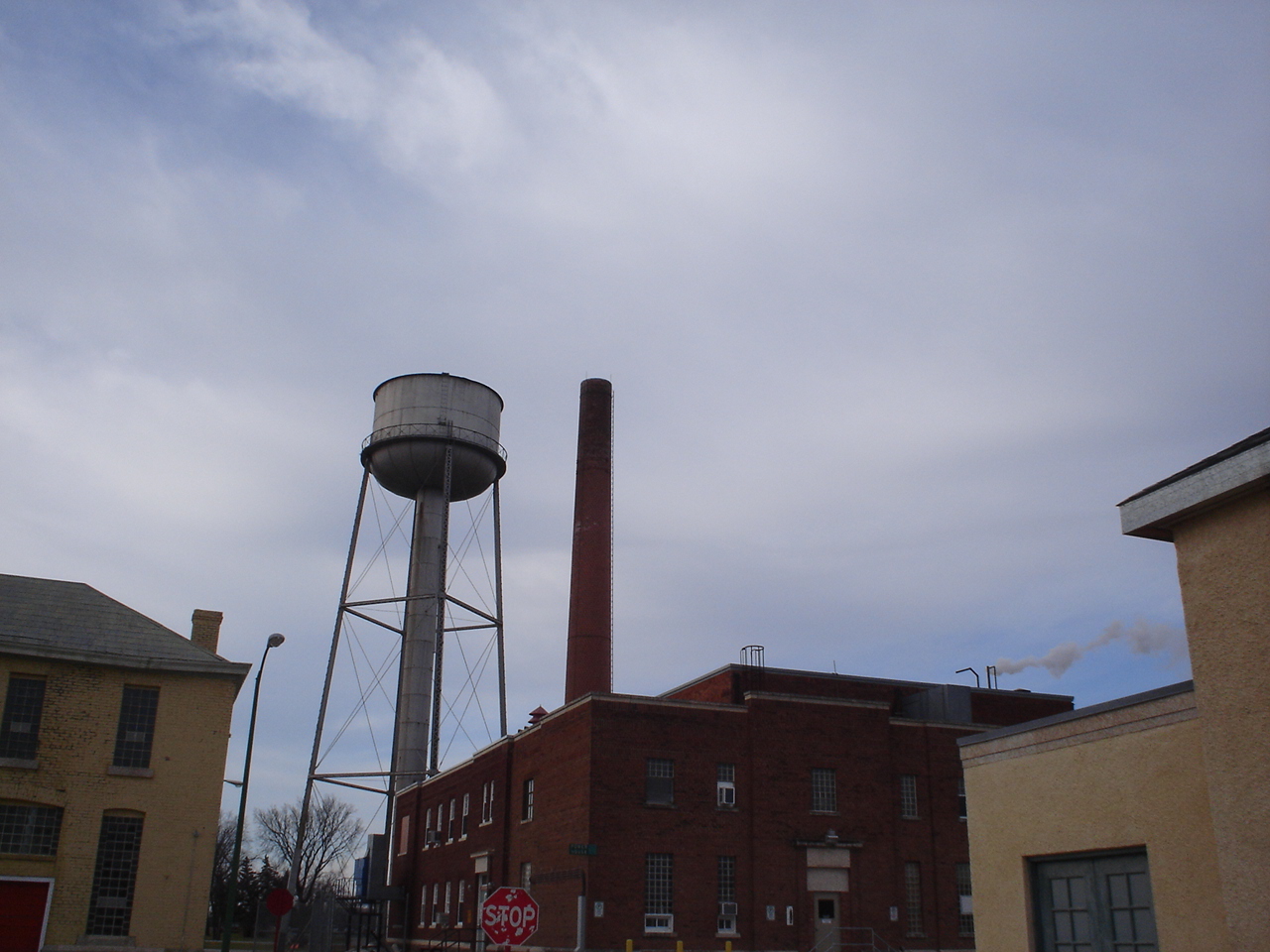
Similarly, no swifts entered the Small Yellow Chimney on August 3 when Gerald and Robert watched it. On July 18, during a robust roosting hour session, 8 entries and 6 exits were seen and 3 swifts were inside at one time. This indicated a possible helper was onsite at a nest chimney, but July 18 is too early for fledging. The earliest known fledging date this summer was July 30 at the Church in St Adolphe; the family group was still present on August 5. So the absence of swifts at the Small Yellow Chimney on August 3 may have reflected a nest failure.
Still in Selkirk on August 3, Carol, Gerald, and Robert counted 27 roosting entries at the Large Stack; this was up from July 18 when 17 swifts roosted. The increase suggested a pre-migratory group was setting up, but this secondary late-summer peak was 6 less than the spring peak count of 33 recorded on May 25 (NRMP-1).
Matt sent an update from Carman on August 5. All three nest sites in town were occupied and young were in the nests. Bad news winged in on August 6 – no swifts were using the elementary school over two hours which straddled daytime and roosting hours (2030 – 2230 H); a construction trailer was below the chimney. On August 8, Matt returned to the school to find the chimney demolished. Apparently, the heating system had been upgraded and it was felt the chimney was no longer necessary.
Ken and Jan went to their Dauphin roost on August 5. At the very end of the observation hour, 10 swifts arrived. Interestingly, Ken noted that “they all went down in about a 2 minute period with one having trouble lining up and after 4 tries down it went.” It was likely a young bird or, at least, one that was not familiar with the chimney.
On August 6, swifts were still active at the private home and Memorial Hall chimneys in Carman.
Tim was in Melita on August 6 and saw “a swift doing a terrible impression of trying to enter the chimney ~ 0930 H”. A fledgling telegraphed its need to learn how to drop past the chimney rim! This site was discovered in 2015 as an active nest site but the outcome was not determined. We are glad to upgrade the status to a successful breeding site for 2016.
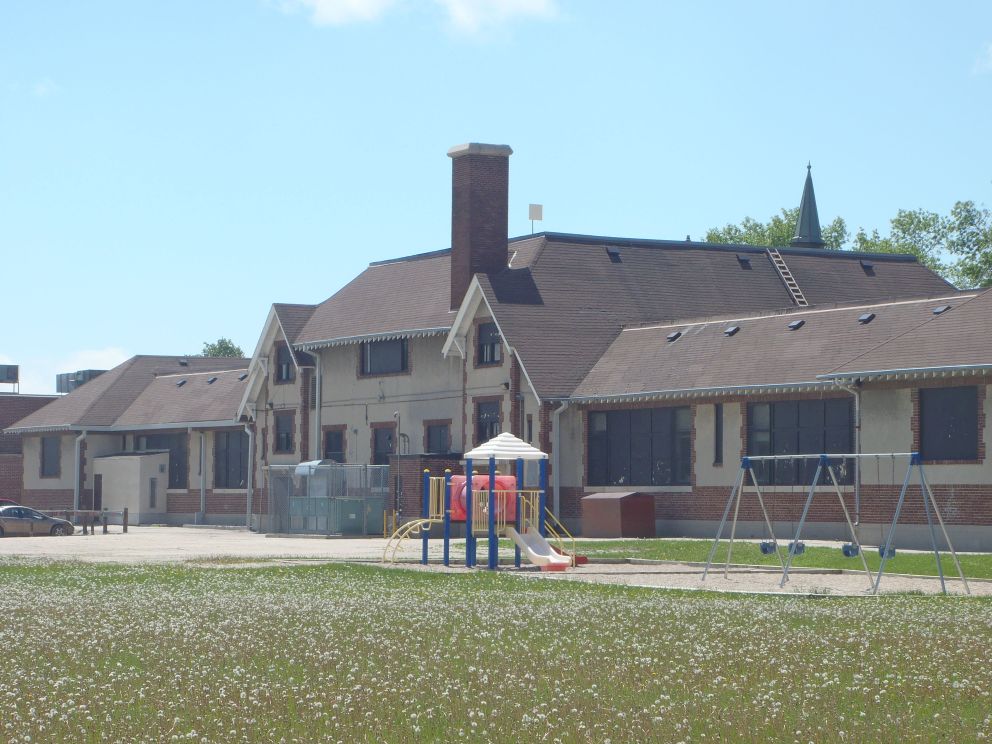
David and Adolf rallied at the Assiniboine School August 6. They “did not see a single swift until one snuck up from behind us, southeast, and entered the chimney at 9:41, 40 minutes after sunset. Then lo and behold, it or a second bird, exited 2 minutes later at 9:43. We hung around for another 10 minutes or so, but saw nothing else and the mosquitoes were driving us crazy.” Despite the apparent abundance of food, the swifts had finished using Assiniboine School for 2016. This was another example of swifts being on the wing after curfew with their roosting destination unknown. A special shout out of thanks goes to the St James monitors for their many, many long hours of monitoring this year.
Millie and Margaret generously scouted out Souris after their Brandon site was abandoned in July. On August 5, a group of 8 swifts (less than the 12 seen on July 28) were flying about, but no roosting entries were seen at Murphy’s (5 roosted on June 2 when the chimney was watched by Tim and Gillian). We appreciate your extra effort in monitoring one of the “remote” communities Margaret and Millie.
Frank, Jacquie, and Lewis travelled from Winnipeg to Otterburne again on August 7. It was a rewarding road trip. A lot of activity was seen at Providence College, including some “tentative entries/approaches after low level circling of the site”. Fledglings were in the air! The final roosting tally was: 0 in the Chimney near the Bell tower (Site 550); 13 entries which included juveniles, 8 exits, and 6 roosting swifts = a successful nest site at the Large Chimney (Site 551); 7 entries which included juveniles, 2 exits, 5 roosting swifts = a successful nest site at the Skinny Chimney (Site 552). Thanks so much folks for going the extra distance this year.
David saw 1 entry at his La Broquerie church site on August 7. Being curious about the low roosting count, David watched again the next night. There were 2 entries and “one of the birds did a near miss and had to go round again”. A fledgling or adult unfamiliar with the site was attempting a landing.
Jacquie and Frank trekked out to Steinbach on August 8 to fill in yet another gap in our database for 2016. Three proficient roosting entries were seen. A visit from a “nice security guard” rounded out the evening’s excitement.
Moving over to St John’s Ravenscourt on August 10, Frank and Jacquie saw 1 exit and 4 consecutive entries – the last one being a fluttery tumbling entry of a fledgling. Another bonus round followed as “We chatted with another nice security person, too.” It was like a Spy vs Spy vs Spy caper – the security guard checking out the monitors checking out the chimney.
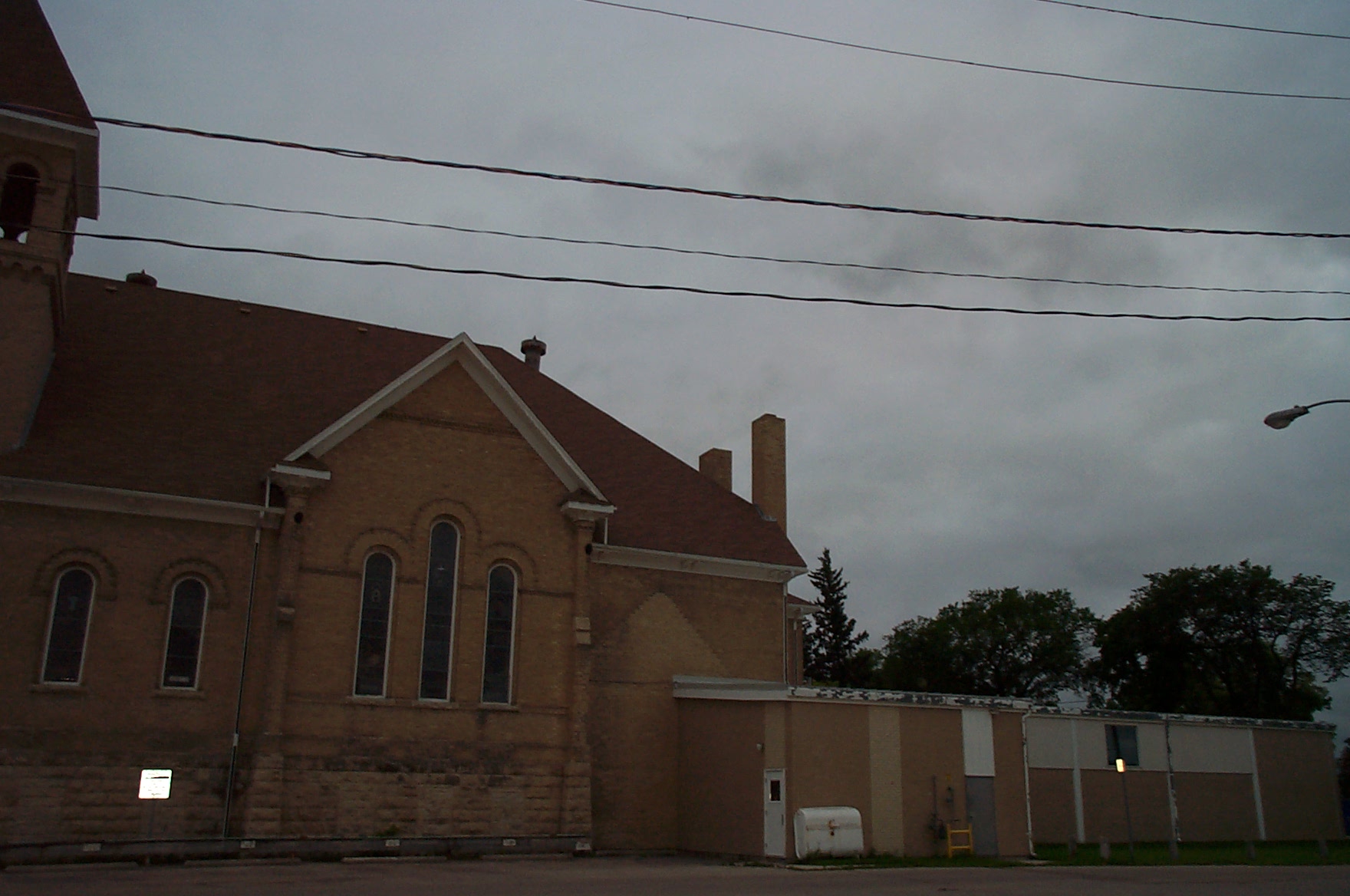
Between August 2-10, Janice did a huge job monitoring the Trinity Church in Portage. There are two chimneys that can be seen simultaneously – a main chimney and a clay-lined chimney on the north side which was seen to be used for the first time this year. For the main chimney: 4 feeding cycles were made and 2 roosted on August 6; 1 feeding cycle and 3 roosting swifts were seen on August 8; 3 feeding cycles and 2 roosting swifts were counted on August 9. On August 10, things got interesting…3 roosting entries only were made in the main chimney while 4 other fluttery attempts were abandoned. PLUS, Janice saw 11 entries and 8 exits with 4 in at one time and 4 roosted for the night in the north chimney. A total of 7 swifts called Trinity Church home for the night. Having witnessed several chimney hopping events with St Adolphe fledglings, I am inclined to think Trinity fledglings got airborne from the main chimney and dropped into the second, adjacent chimney. Then the parents continued feeding them in the non-natal site.
Matt continued to track the Carman swifts from August 8 through 14. He dealt with “a wing flash over the edge of a chimney”…sneaky entries and pop-up and away stealth exits plague us all. The breeding attempt at Memorial Hall was successful – the maximum count of 5-6 roosting swifts came on August 9; by August 13, no activity was seen in the evening and, again, no activity took place on August 14.
Matt’s scrutiny paid off with an amazing observation at the private home on August 12. It is best told in Matt’s words: “Friday 2030 to 2200 hrs House on 1st SW: Single swift exiting chimney then re-entering, about twenty minutes apart. Other swifts were calling in the area; Martins were calling etc. At about 2055 hrs a single swift left the chimney, calling loudly as it went overhead. Three other swifts then left spaced out about a minute apart. Though I watched until 2200 hrs they did not return. At 2130 hrs it had become very dark with storm clouds overhead. The chimney was barely visible but I am sure if the swifts had returned I would have seen them.” Matt continued by saying “I have seen swifts returning in the dark after foraging far afield just prior to leaving on migration….but these birds, old and newly fledged young appear to have left at night and not returned.”
Your insights are fascinating Matt – thanks for sharing this rare gem with us! We know so little about the migratory behaviour of Chimney Swifts in Manitoba.
Ken and Jan finished their season in Dauphin on August 16 when the roosting count was “0”. Thanks so much for taking on the monitoring duties at our northern-most roost site and enduring to get that final data point.
Ok – time for a breather here. We’ve made it to mid-August and the roost sites in Dauphin and Assiniboine School have emptied; the Selkirk roost was down to 1 swift on August 9 when Carol, Gerald, and Robert were at the chimney-side. Fledging was reported for nest sites in St Adolphe , Carman, and Winnipeg.
A lot of activity followed in the second half of August. Monitoring teams were still tracking the cluster of sites in Portage, Selkirk, and St Adolphe. Late nesting swifts were on the radar. John was pushing on for season ender observations in his group of newly discovered City Centre and South Point Douglas sites in Winnipeg. Veteran monitors were sharing their final observations. It will make most sense to clump reports by observers, sites, and/or areas for the last couple of weeks of August. Here we go…
Rudolf saw 2 swifts over the Melita museum on the evening of August 10. In East Kildonan, closer to home, 9 were flying over Kildonan Dr on August 4, while 2 were seen in the E.K. area the next day. On the 16th, 4 swifts including 1 juvenile were in the air – likely from the cluster of nests near the Northdale Shopping Centre. At least 1 swift was heard over Kildonan Dr on August 18.
On August 17, Blaire noted that no swifts had been flying in the St Norbert area for the past week. The last big sighting event was on August 3, ahead of a storm, when over 12 swifts put on an amazing aerial display for over an hour. Blaire’s visitors were treated to quite a performance as the swifts swooped about. When storm fronts meet, there can be an upwelling of insects which provides rich feeding opportunities. One year in St Adolphe, the opposite phenomenon occurred with forest fire smoke descending in town. Chimney Swifts, Purple Martins, Barn Swallows, and Tree Swallows were moving in one dynamic feeding group – inches off the cemetery grounds – as all the insects were forced down with the sinking smoke.
Chimney Swifts were seen over the Assiniboine English Garden on the morning of August 16. John saw 4 flying for ~35 minutes between 0700-0800 H.
Two multi-site recons were done on August 17 – in Portage and St Adolphe. In Portage, Janice and Joyce recorded 6 roosting entries in the main chimney of Trinity United Church while 3 swifts roosted in the north chimney. Gord saw 3 swifts enter the Correctional Centre chimney. Jim noted 1 entry at the Duffield and Duffield site. Cal had 7 entry/exit cycles and 5 roosting swifts at the Victoria School/Red River College chimney; a successful nesting attempt was indicated.
The August 17 multi-site in St Adolphe laid the baseline for interpreting nesting outcomes. During the robust roosting hour the net roosting count was: 2 in the SE Club Amical chimney and 0 in the NE Club Amical Chimney – Rob and Kathy were on site; 0 at Brodeur Bros – Jacquie enjoyed viewing the sunset; 3 roosted at the Church and ALL of the swifts entered before the roosting hour – Frank and Lewis were observing; 2 juveniles at Main St – Barb was watching.
The family group at the Church had dispersed after August 5 when 8 roosted (July 30 = fledging). Fledging at Main St took place on August 12, so it was surprising to have dispersal of the family group only five days later. Fortunately, observing the cleanout trap contents will inform the clutch size etc.
 The cadence of the SE Club Amical pair was never established and, frankly, they drove me crazy most of the summer. A re-nesting was indicated but a perfect storm of roofers, electrical and rain events, plus “helpers” (sometimes non-parental birds arrive and push eggs out of nests or peck juveniles to death) added to the confusion. August 22 was an inflexion point, as the feeding activity declined to 1 cycle per hour then it petered out on August 23. Daytime activity stopped on August 24. That night, 2 swifts entered the SE chimney but both left again; 1 swift returned to the SE and 1 swift roosted at the NE chimney. The breeding attempt at the SE chimney was over – no record was set for successful late nesting. On August 30, no swifts roosted in either Club Amical chimney.
The cadence of the SE Club Amical pair was never established and, frankly, they drove me crazy most of the summer. A re-nesting was indicated but a perfect storm of roofers, electrical and rain events, plus “helpers” (sometimes non-parental birds arrive and push eggs out of nests or peck juveniles to death) added to the confusion. August 22 was an inflexion point, as the feeding activity declined to 1 cycle per hour then it petered out on August 23. Daytime activity stopped on August 24. That night, 2 swifts entered the SE chimney but both left again; 1 swift returned to the SE and 1 swift roosted at the NE chimney. The breeding attempt at the SE chimney was over – no record was set for successful late nesting. On August 30, no swifts roosted in either Club Amical chimney.
We got a head’s up about a nest full of juveniles at St Avila School on August 18 (see the “Peering Down the Chimney” blog, August 21). Juveniles stay in the nest until ~21 days of age, so these young had a lot of growing to do. Frank and Jacquie did another special assignment on the evening of August 19. They noted very active feeding – 8 entries and 6 exits took place in the robust roosting hour. The adult swifts persisted through 17 C temperatures and periods of light rain. On August 24, there was active feeding = 3 X hour. All seemed well. Activity was lean on August 25 early in the evening. Returning on the afternoon of August 26, only 1 feeding cycle was made in an hour – no juveniles were seen and the airspace was empty except for the quick, competent entry and exit. Two swifts roosted just before the roosting hour on August 26 – no feeding cycles were seen. On August 28, a fast entry/exit cycle was noted and 2 swifts roosted for the night. On August 31, Jacquie and Frank saw only 1 swift roosting for the night. Similar to the SE Club Amical experience, the late nesting pair at St Avila seemed to exhibit decreasing feeding activity that resulted in a failed breeding attempt.
Tim offered an interesting perspective. Begging calls from juveniles elicit feeding from adults. If the young in the late nesting sites were weakened by cold overnight temperatures, or weather induced low food availability etc., then the attending parents might not push ahead with feeding, despite an apparent abundance of mosquitoes being about.
The swifts at St Avila and St Adolphe were record breaking in terms of the latest date when feeding behaviour has been seen at a nest site. The adults did not abandon their young, despite migration being underway, but their efforts were not enough to achieve fledging. We come across these situations so rarely that we really don’t understand all the issues. Clearly though, the recipe for a possible successful nesting outcome still = a breeding pair onsite + nest building by June 1-4. Time is a challenge for Chimney Swifts breeding in Manitoba.
Many thanks to the Selkirk birders group for taking on so many monitoring missions this year. They have pushed hard in August to track three active sites. A summary of their work follows…
At the Selkirk Infirmary, a successful nest site, Robert noted 2 roosting swifts on August 9; 3 roosting birds on August 17; and 0 activity on August 22.
At the Selkirk Large Stack: Carol, Gerald, and Robert had 1 entry/exit cycle and 1 roosting swift on August 9; Virginia and Linda saw 2 entry/exit cycles involving 2 birds then 2 roosting entries on August 17; 3 swifts roosted on August 22 when Gerald and Robert watched; 0 swifts entered on August 29 when Winona, Gerald and Robert were on site.
At the Selkirk Merchant Hotel, Winona spent enumerable hours tracking this successful nest site. On August 15, 1 swift roosted; 2 roosted on August 16; 1 roosted on August 17; 2 roosted on August 18; then 0 roosted on August 24, 25, and 26. This was an interesting alternation of 1 and 2 roosting swifts – then it was time to migrate…
Segue to migration. Gord sent word that all the Portage swifts had left by August 29.
John had 0 roosting swifts at his Higgins site on Aug 28th. Earlier in the day, John saw 5 swifts flying west of Shaftsbury and Corydon.
Spectacular September observations, made by Suzanne at her Main St home in St Adolphe, wrapped up the Chimney Swift sightings for 2016. It was a bookend experience for a truly memorable season which started with Beth and David’s season opener, May 25 (NRMP-1). In the pouring rain, 156+ swifts funnelled into the Assiniboine School roost at the very end of the drenched evening.
Suzanne and her husband watched in awe as Chimney Swifts fed on insects, low in their garden, on the evening of September 2. Mosquitoes had been very abundant in their yard recently, hiding in the plants during the day. The swifts flew very close to the ground and circled through the foliage – they had a swallow- like appearance but appeared unusually large. Isn’t it an interesting change of perspective to see swifts up so close?! The next evening, September 3, the same feeding frenzy took place then some of the birds flew up to the roof top and began circling the chimney. After repeated laps, they hovered over the rim and dropped into the chimney. None were seen leaving that night. So, it appears that an opportunistic foraging took place before migrants bunked in for the night, ahead of a huge thunderstorm. This was a reverse bed ‘n’ breakfast scenario – dinner buffet in the yard followed by nighttime accommodations in the 2.5 X 2.5 brick chimney.
Nobody deserves to see such a spectacle more than Suzanne – she is a Swift Champion (see “Volunteer Champions” blog, March 31, 2016) who has indulged me staring at her chimney and sneaking peeks in her cleanout trap for 10 years!
It has been rewarding to work with you all this year, as we attempted to unravel what it means to be a Chimney Swift in Manitoba. Lewis Cocks, the founding father of MCSI, aptly described working with these birds as “an enigma wrapped up in a dilemma”. Many of you shared that kind of experience, facing the mystery of the outliers. Many of you established the framework to describe the more “typical” condition. Either way, your efforts have helped make season 10 an extremely successful year. We have learned much, discovered new sites for the critical habitat registry, and saved some chimneys. Thanks for it all!

Now comes the time to check the databases behind the scenes. Both of the NRMP and MCSI Roost and Nest Site databases will be finalized shortly. Then, webmaster Frank will beam them up to the MCSI website with provide document links.
Tim is busy now with habitat stewardship issues. Once it gets too cold to lay mortar, he will have updates for us. Then, the MCSI Steering Committee will hunker down to set goals for the 2017 season. We will keep connected..
Barb, for the MCSI Team.
